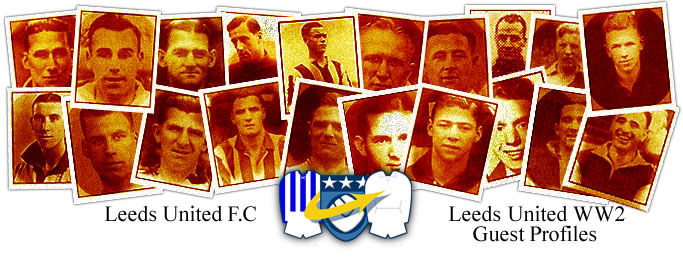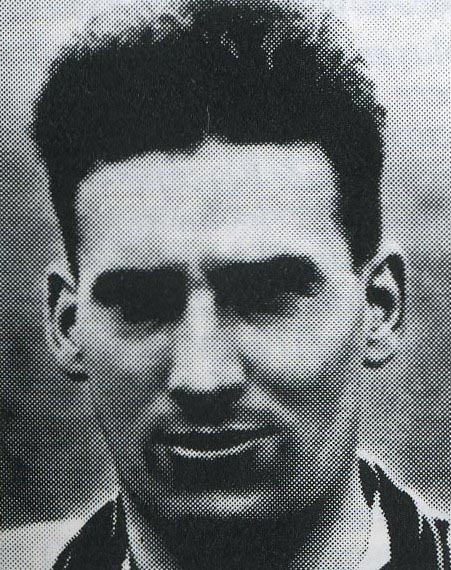

Weaver: Samuel (Sam)
WW2 Guest: 1944-1945
(Leeds United War-time Guest Player Details)
Wing Half
Born: Pilsley: 08-02-1909
Debut: : v Sunderland (h): 09-09-1944
Height & Weight: Unknown
Derbyshire-born Weaver started with his local club Pilsley Red Rose and played for Sutton
Junction and Sutton Town before signing for Hull City in March 1928. He scored five goals in
forty-eight League appearances for the Tigers before moving to Newcastle United in November
1929. He was an aggressive, yet polished left-half who was renowned for his prodigiously
long thrown-ins, said to be the longest in the game. He soon realised that it was not only
distance that mattered but accuracy also. He holds an unusual place in the record books as
the first noted practitioner of the long throw-in, recording distances of over thirty-five
yards at the time when that particular skill, now relatively commonplace, had not been
widely developed. He perfected his throw-ins and they became easily as effective as a corner
kick. Probably the most prodigious throw-in of his career came at St James's Park in a game
against Huddersfield. With players milling around the penalty area Weaver tried to get the
ball over them and to the opposite wing. The ball soared into the air and actually bounced
out of play on the other side of the pitch without any player touching it. Astonished
team-mates marked the spot where the ball bounced and after the game the distance from throw
to the spot was an amazing forty-eight yards. Scoring on his Newcastle debut he was already
well on his way to being a favourite of the Geordie nation, however he experienced both the
highs and lows whilst with Newcastle, winning the FA Cup in 1932 and then relegation to
Division Two the following season. He went on to captain the club and win international
honours with England, with three caps in the 1932-33 season, and played for the Football
League. He made his International debut at Left Half in a 3-0 win over Scotland at Wembley
on 9th April 1932. His second came at Left Half on the 17th October 1932 in a 1-0 win over
Northern Ireland at Bloomfield Road, Blackpool and his final game was on 1st April 1933 in a
1-2 defeat by Scotland at Hampden Park, Glasgow in front of a crowd of 134,710. Leaving
Newcastle in August 1936 after scoring forty-one goals in two hundred and four League games,
he spent three years at Chelsea, where he was their regular left-half and captained the side
from 1938, prior to the outbreak of World War Two and scored four times in one hundred and
sixteen League games. In common with countless players of his era, his career was
interrupted in its prime by the war. During the enforced break from official action, he
guested for a number of clubs, among them Derby County and Leeds United where he played
twenty-seven times in the 1944-45 Football League Northern Section. He made his debut on 9th
September 1944 in the third game of the First Championship and went on to play eleven of the
remaining sixteen fixtures. He was back again for the Second Championship fixtures and
played sixteen of the twenty-two games and twice scored from the spot, the first in a 9-1
win over Bradford City in the first game of the campaign on Boxing Day 1944 and the second
in a 6-1 home victory over Hull City on 3rd February 1945. After the War he joined Stockport
County in December 1945 but only played two League games and retired as a player in 1947 at
the age of thirty-eight. He went into management and coaching, serving Leeds United
(1947-49) and Millwall (1949-54) before making a long-lasting move to Mansfield Town, the
club with which he was associated as Coach, Manager and Administrator until 1971. Weaver was
also a talented cricketer, he played twice for Somerset in 1939, and retained a link with
the county of his birth by serving Derbyshire throughout many summers as their masseur. He
died aged seventy-six at Basford, Nottinghamshire, on 15th April 1985, and his ashes were
scattered on the pitch at Field Mill, the ground of his beloved Mansfield Town.